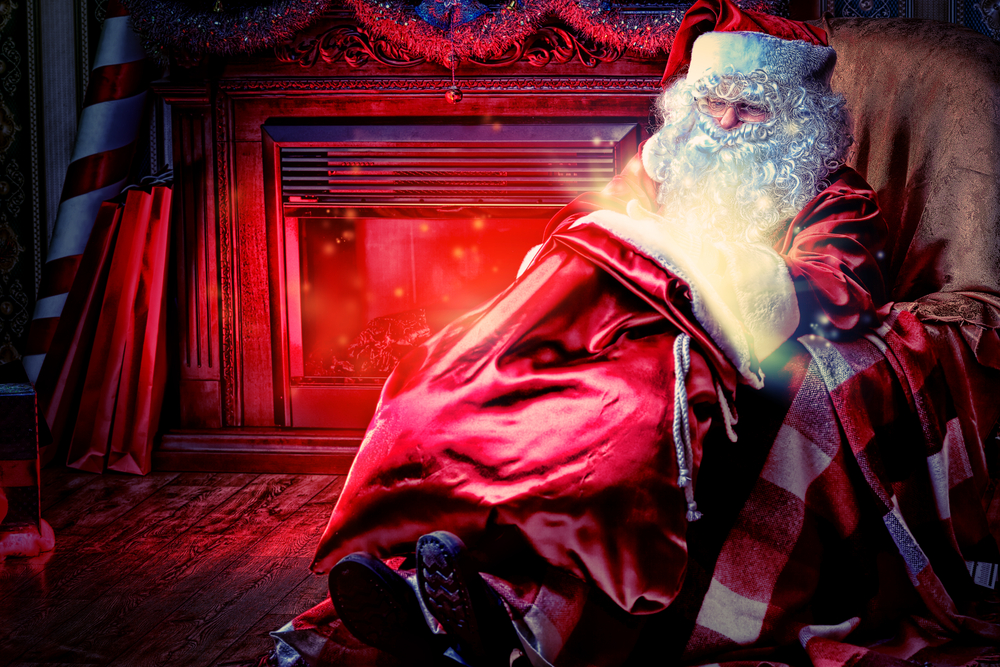
When Santa visited Emily Burr's house when she was a child, he didn't bother to hide his tracks.
His reindeer left teeth marks on the carrot sticks Burr and her three siblings had set out for them, and Santa's milk and cookies were half-eaten in the morning.
"We knew that Santa got milk and cookies wherever he went so he didn't want to eat too much of them," said Burr, now a graduate student in marriage and family therapy at Kansas State University.
And because the Burrs didn't have a chimney, Santa landed on the front lawn. On snowy Christmases, Jolly Old St. Nick would leave boot prints and track marks from his sleigh on the lawn. [6 Surprising Facts About Reindeer]
While such elaborate ruses may technically be deception, most psychologists believe that lying to the kids about Santa Claus is harmless, and may even have benefits.
For instance, Santa can serve as an example of selflessness and create family traditions, said Jared Durtschi, a professor of marriage and family therapy at Kansas State University.
"If it's about giving and love and service, I think it's a healthy, wonderful thing that can help them for the rest of their life," Durtschi said.
Sign up for the Live Science daily newsletter now
Get the world’s most fascinating discoveries delivered straight to your inbox.
Magical thinking
It's easy to get young children to believe in Santa because they already use magical thinking, said Karl Rosengren, a cognitive psychologist at Northwestern University. When kids are between 3 and 6 or 7 years old, they use magical thinking whenever their expectations about the world's workings are violated, he said.
That makes children more easily convinced of Santa's existence, but the belief has to be actively supported by parents and culture nurturing that belief.
"Fantasy belief and Santa are an outgrowth of these magical beliefs, but they are driven much more by cultural support for these kinds of things," Rosengren told LiveScience. "There's no way a child would come up with Santa all on his own."
Losing belief
Once kids are old enough to use logic and reason (usually around 7 or 8), as opposed to magical thinking, they will start to question inconsistencies in the Santa storyline.
Part of that hinges on how motivated the parents are to keep up the ruse. For instance, a child whose parents leave out fake reindeer poop and play bells outside the window to mimic Santa's sleigh will probably believe longer than someone who receives presents with "Love, Santa" written on them in mom's handwriting, or who gets Santa's presents under the Christmas Tree in the same wrapping paper as all the rest of the gifts, Durtschi said.
Most often, a peer will clue the little ones in to Santa's nonexistence.
"There's always going to be one kid who was taught not to believe, he'll say 'There is no Santa, my parents say there's no Santa."
St. Nick believers may then start to say to themselves, "That doesn't make sense. It actually makes more sense that it could be mom," he said.
At that point, parents may decide the jig is up and tell children that Santa isn't real, but more often they simply stop putting up a pretense and let the children put two and two together, Rosengren said.
Both methods are perfectly fine for the children, as long as you don't make them feel stupid for their belief, Durtschi said.
Goodbye Santa
Though Burr cherishes her Christmas memories of Santa, realizing that St. Nick was fictional in fifth grade was slightly traumatic, she said.
She figured it out when Christmas morning came and she got hangers her mother had suggested she request from Santa in addition to her preferred gift.
"I pulled her aside – I was being dramatic and not serious — and I said 'It almost seems like you're Santa because Santa brought me something that you wanted me to ask for," Burr said. "And she said 'Shh, don't tell the rest of the kids.'"
Follow LiveScience on Twitter @livescience. We're also on Facebook & Google+.

Tia is the managing editor and was previously a senior writer for Live Science. Her work has appeared in Scientific American, Wired.com and other outlets. She holds a master's degree in bioengineering from the University of Washington, a graduate certificate in science writing from UC Santa Cruz and a bachelor's degree in mechanical engineering from the University of Texas at Austin. Tia was part of a team at the Milwaukee Journal Sentinel that published the Empty Cradles series on preterm births, which won multiple awards, including the 2012 Casey Medal for Meritorious Journalism.









